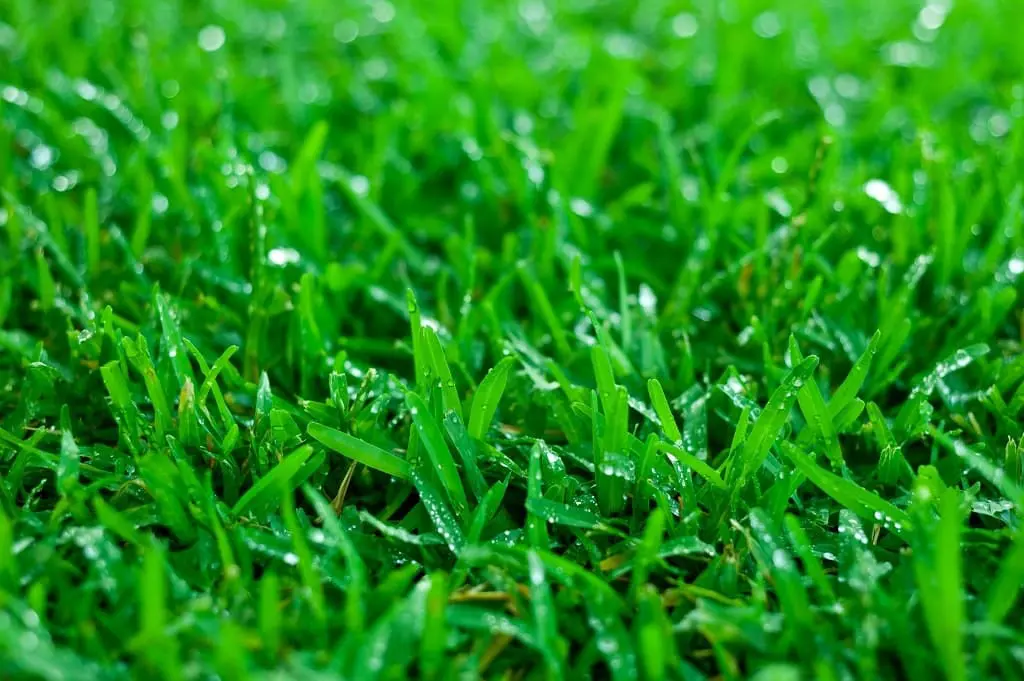Trying to decide what kind of grass to use on your commercial property in Green Bay, Madison, or elsewhere in Wisconsin?
At Earth Development, we help businesses across the Midwest find the right kind of grass. Our local teams provide regular, reliable, and affordable landscape maintenance services to ensure your grass stays healthy.
Right here on our website, you’ll even find valuable information about landscaping, grass, and more – and in this piece, we’ll explore different types of cool-season grasses to help you make the right decision.
What Is Cool-Season Grass?
So, what does cool-season grass mean? Put simply, this is a kind of grass that prefers cooler temperatures.
Ideal for the Midwest!
Cool-season grasses grow well in cool weather in the spring and fall and will do best with more moderate summers. The ideal temperature for cool-season grass is between 65 and 90 degrees Fahrenheit.
Best Regions For Cool Weather Grass
While it’s still possible to grow warm-season grasses in the Midwest, if you own a commercial property in states like Minnesota and Wisconsin, it’s probably wise to choose from the wide range of cool-season grasses out there.
With cool-season grass, you’ll see healthy growth during the colder months, helping you avoid that ugly brown color when it’s not the summertime. Any northern part of the United States is a great environment for this kind of grass. The further south you get, the tougher it gets for this grass to grow.
Common Cool-Season Grass Types
The best kind of grass for your Wisconsin lawn is cool-season grass – but how do you know which kind of cool-season turfgrass is right for you?
Our team at Earth Development will help you make the right decision. There are many kinds of cool-season grass, all of which look slightly different, are different shades of green, and may require different kinds of soil.
Four of the most common kinds of cool-season grass include:
- Fine Fescues
- Kentucky Bluegrass
- Tall Fescues
- Rough Bluegrass
When To Plant Cool-Season Grass
As a rule, remember to plant your cool-season grass more than 45 days before the first frost. You want to make sure you plant the grass before the air temperatures drop and the soil gets cold.
By planting before the weather turns cool, you’ll give your grass a chance to grow well during the fall season – when it thrives – before going dormant for the winter.
Maintenance Of Cool-Season Grasses

Maintaining your cool-season grass is essential. Even if this grass thrives in cooler weather, it doesn’t mean it won’t need regular watering, dethatching, and fertilizing. For every kind of cool-season grass, however, you’ll have different considerations. From the amount of water a grass needs and how often to the kind of fertilizer it thrives in best, it’s always best to trust the services of local maintenance experts.
One thing to remember with regards to general maintenance, however, is not to mow your grass too short.
When it comes to mowing, remember to allow the grass to grow 50% longer than you would like it, and then mow one-third of the grass off the top with a sharp-bladed mower.
Are Cool-Season Grasses Cold Tolerant?
Cold weather grass is generally more tolerant of the cold. This kind of grass came from Europe where the climate is cooler, the summers more moderate, and the winters colder. You should expect your grass – assuming that it’s healthy – to stay green during the colder months. That doesn’t mean, however, that the grass will continue to grow during the winter.
Expect your cool-season grass to stay healthy and perform well in colder weather.
Are Cool-Season Grasses Heat Tolerant?
This kind of grass is not tolerant to extreme heat. There are some kinds of cool-season grasses that handle heat better, including Tall Fescues. However, if you’re in a climate where the summers and springs are warmer, cool-season grass probably isn’t for you.
Nonetheless, if there is an unexpectedly warm period during the spring or the summer, you may see your grass turn brown. However, this can be rectified with proper care and maintenance and won’t always kill the grass.
Are Cool-Season Grasses Drought Tolerant?
Some cool-season grasses are more tolerant of drought than others. That means that some kinds of grass can slip into a dormant state during a period of drought and can easily be brought back to life after being watered and cared for.
Some of the most popular cool-season grasses that deal with drought better than others include Zoysia grass, Bermudagrass, and St. Augustine grass.
Remember, though, that each grass comes with a range of different characteristics — so be sure to check them out before making your decision. Some prefer more shade, some grow slower, and so on.
Are Cool-Season Grasses Shade Tolerant?
Cool-season grasses typically prefer not to be in direct heat, but that doesn’t mean they don’t need light. Cool-season grass needs plenty of light, though some are more tolerant of shade than others.
One of the best choices for properties with a lot of shade is Zoysia grass. This variety of grass prefers shady conditions, meaning it won’t die even if it’s surrounded by trees or in the shadow of neighboring buildings.
Bahiagrass and Centipede grass are two great options for properties with moderate shade, while Bermudagrass needs more direct sunlight.
Wisconsin’s Cool-Season Grass Experts
Still not sure what grass is right for you? It’s not uncommon for business owners to feel overwhelmed with the huge range of grass options and the maintenance required to keep a lawn looking well-kept and healthy.
At Earth Development, we provide comprehensive landscaping services and lawn maintenance for businesses across Wisconsin and the Midwest. For help choosing the right grass and keeping your lawn looking great all year round, why not give our team a call today?
